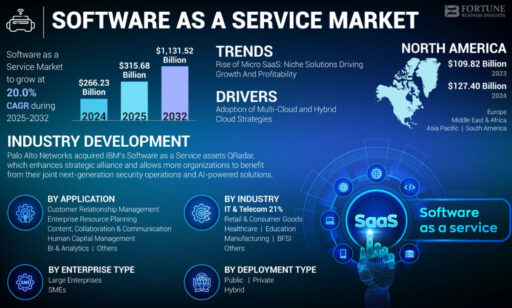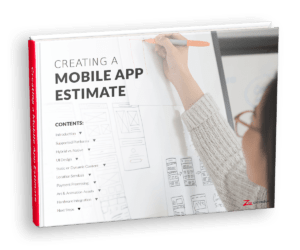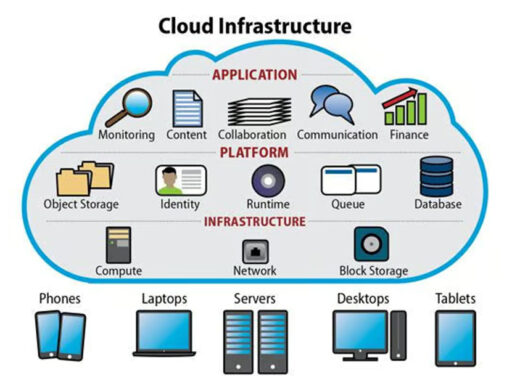SaaS 101: Key Benefits, Tech Stack & Finding the Right Development Partner
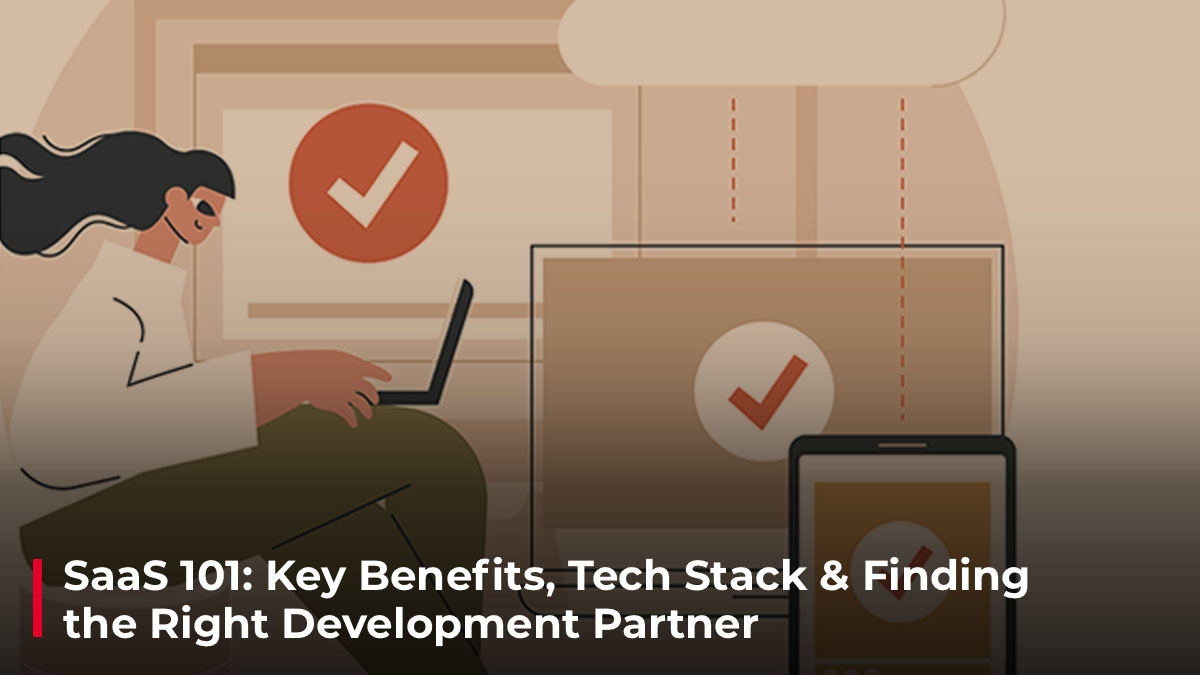
The Software as a Service (SaaS) model has really taken over how we use software today, especially in mobile and enterprise spaces. Leading platforms like Salesforce, Adobe Creative Cloud, and Dropbox clearly show this shift — we’re no longer buying and installing software the old-fashioned way, but accessing it on-demand, whenever we need it.
When your business serves hundreds of thousands of users and stores petabytes of data, a deep understanding of the underlying software and hardware infrastructure for your SaaS project is paramount. For this, you need a dedicated development team with expert SaaS developers capable of comprehending your vision and collaborating effectively over time.
In this article, we’ll show you what SAAS is, explore the critical tech stack needed for building a robust SaaS platform, outline key factors for picking a reliable SaaS development partner, and showcase some of the companies innovating in this dynamic space.
What is Software as a Service (SaaS)?
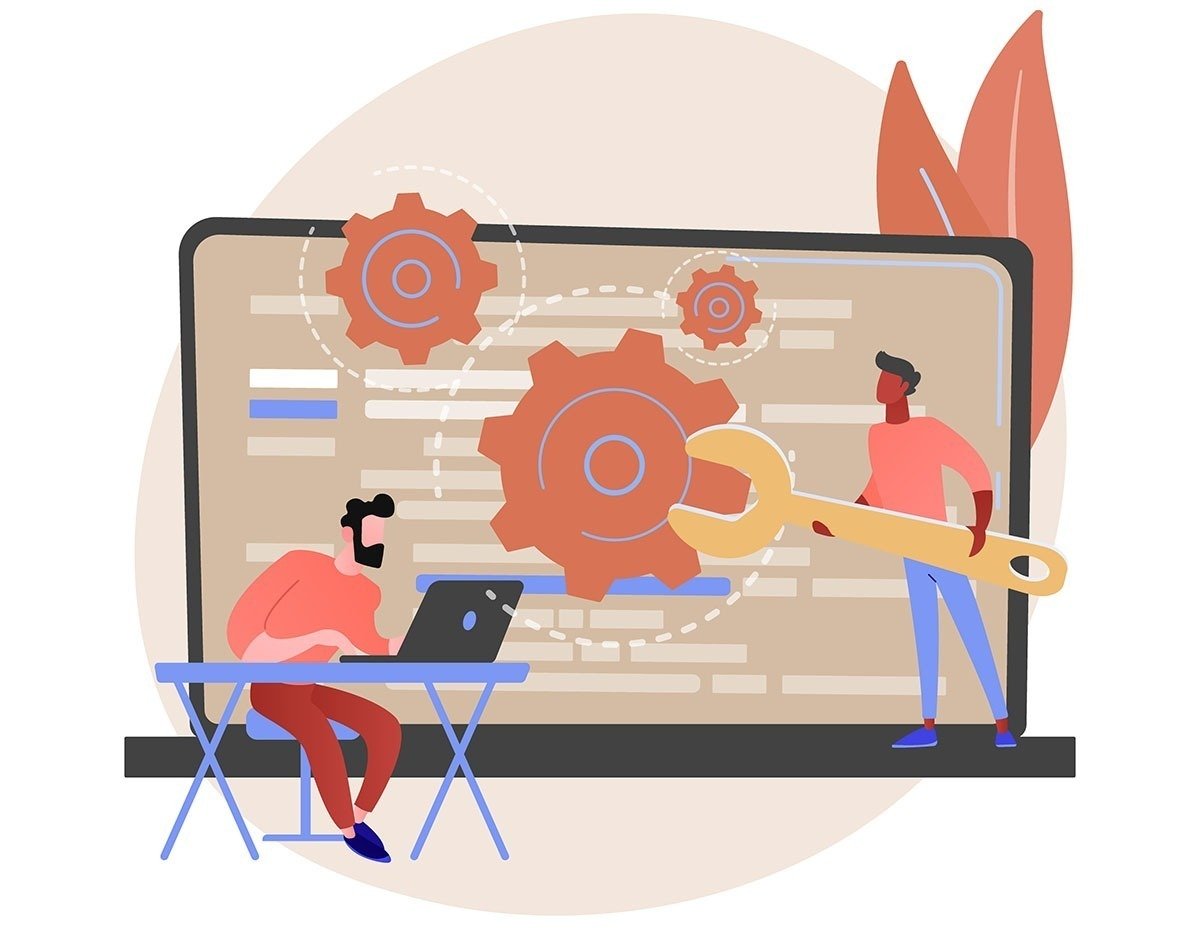
SaaS or Software as a Service is a cloud-based software delivery model that’s making a huge impact on how businesses and individuals access and use applications. Compared to traditional software, SaaS takes a completely different approach to delivery and usage. It offers instant access to powerful software without any of the usual fuss – no complicated installations, no expensive licenses to buy upfront, and no endless updates to manage.
So, instead of buying and installing software, in SaaS, one can simply subscribe to any vendor-provided cloud-hosted software, usually on a monthly or annual basis, and access it directly over the internet.
That means you don’t need to purchase a perpetual license, install the software on your devices, or even worry about maintaining and hosting it. The SaaS provider takes care of all the technical heavy lifting, including infrastructure, maintenance, updates, and security.
What’s Accelerating SaaS Adoption?
A lot of the popularity of the Software as a Service model has to do with the near-universal availability of internet access. Even the smallest business will likely require a stable connection for its day-to-day operations. Beyond that, we are seeing a massive shift toward digital-first operations across industries that has created a growing need for frequent updates, better scalability, and more agile systems. This makes cloud-based software a natural fit.
SaaS helps meet those demands without the heavy investment typically required for on-premise infrastructure. It allows businesses, big and small, to access modern solutions quickly and cost-effectively.
Unlike the outdated approach of disk installations, product keys, and one-time fees, today’s
SaaS providers and tech enterprises are overwhelmingly prioritizing cloud-hosted solutions. This strategic pivot to the cloud not only dramatically reduces integration complexities and costs but also streamlines the user sign-up process, making access effortless.
And it’s not just B2B, SaaS is increasingly popular in the B2C space as well, adding to its popularity.
Statista reveals that the global SaaS market generated approximately $250 billion in revenue in 2024, making up a substantial two-thirds of all public cloud services. Looking forward, the momentum is only accelerating. Fortune Business Insights forecasts the SaaS market will explode past $1.13 trillion by 2032.
As the SaaS market continues to grow, more and more businesses are turning to it as a core part of how they operate. Rather than investing time and resources into building custom software from the ground up, companies, both large and small, are opting for ready-made, third-party solutions that are flexible, scalable, and easy to integrate into their existing workflow. The perks of back-ups, easy accessibility, and device independence are much more attractive than a one-off product designed only to solve a single problem.
This shift creates massive opportunities for innovation. With the right industry insight, a well-defined application concept, and an experienced SaaS development team, even a niche idea has the potential to grow into a solution that serves entire industries and becomes the backbone of billion-dollar ecosystems.
What Are The Key Benefits of SaaS Solutions?
SaaS allows you to tailor its features and functionalities to suit your unique business requirements. Whether it’s enabling specific features, adjusting workflows, or scaling your usage up or down, SaaS gives you that flexibility. You can revisit and update your setup anytime your needs evolve.
You’ll always get access to the latest and most updated software versions without any worries about compatibility or security. Plus, with the provider handling all the maintenance and hosting, your business can focus on its core work rather than getting sidetracked by IT infrastructure.
In today’s dispersed work environment, SaaS solutions help you stay connected. Since everything’s cloud-based, the only thing your team needs is an internet connection, and they can access the software from practically anywhere in the world via a web browser or client program. This ensures your operations keep flowing smoothly and collaboration stays top-notch, no matter where everyone’s working from.
For example, tools like Slack and Microsoft Teams have become an everyday essential in the modern work environment. These comprehensive tools keep internal collaborations on point through instant messaging, video conferencing and file sharing, all in a single interface.
One of the most powerful aspects of SaaS is how lightweight it is for users. While some major SaaS applications still require a discrete installer for advanced functionality, like Dropbox, Skype, or OneDrive, many others don’t require a dedicated application on a hard drive at all. Services like Google’s G Suite and Salesforce can run in a browser window alone. This drastically reduces the requirements of maintaining or updating a company’s infrastructure. All an employee needs is a device with an online connection and their product’s login credentials, and they’re able to use the application.
Modern SaaS solutions come with robust APIs that enable seamless integration with other software applications and services you might be using. This allows your SaaS tools to communicate, automate workflows, streamline data transfer, and create a powerful ecosystem, ensuring efficient interoperability.
Unlike traditional software that often stores data locally, SaaS keeps everything in the cloud, typically on secure, redundant servers maintained by the provider. This approach allows for frequent, automated backups and the creation of redundant copies, which is crucial in case of any system failure. For instance, your company’s Salesforce profile is backed up continuously, ensuring your critical information is always recoverable. This significantly eases the strain on your organization’s IT department, as the heavy lifting of data protection and disaster recovery is expertly outsourced to the cloud provider.
Given that SaaS providers host multiple applications and serve businesses of all sizes across the globe, security is a top priority. They implement enterprise-grade protections that go far beyond what most individual companies could manage on their own. This includes comprehensive measures like data encryption, secure authentication, and continuous monitoring to safeguard user data and communications. Essentially, when you rely on SaaS solutions, you benefit from these high-level security measures that are constantly updated and managed by experts, without having to build or oversee them yourself.
Compared to traditional software, adopting SaaS solutions can significantly reduce upfront costs and IT overhead. With its pay-as-you-go pricing model, you only pay for the services you need and how much you use. This approach plays a great deal in offering your business incredible financial flexibility without any commitment or infrastructure changes — you can end your software product contract anytime you want.
Because of these huge benefits, digital distribution of software is witnessing widespread adoption. So, why would anybody install outdated software from a disc when you can download the newest edition of the software directly from the cloud?
Key SaaS Tech Stack
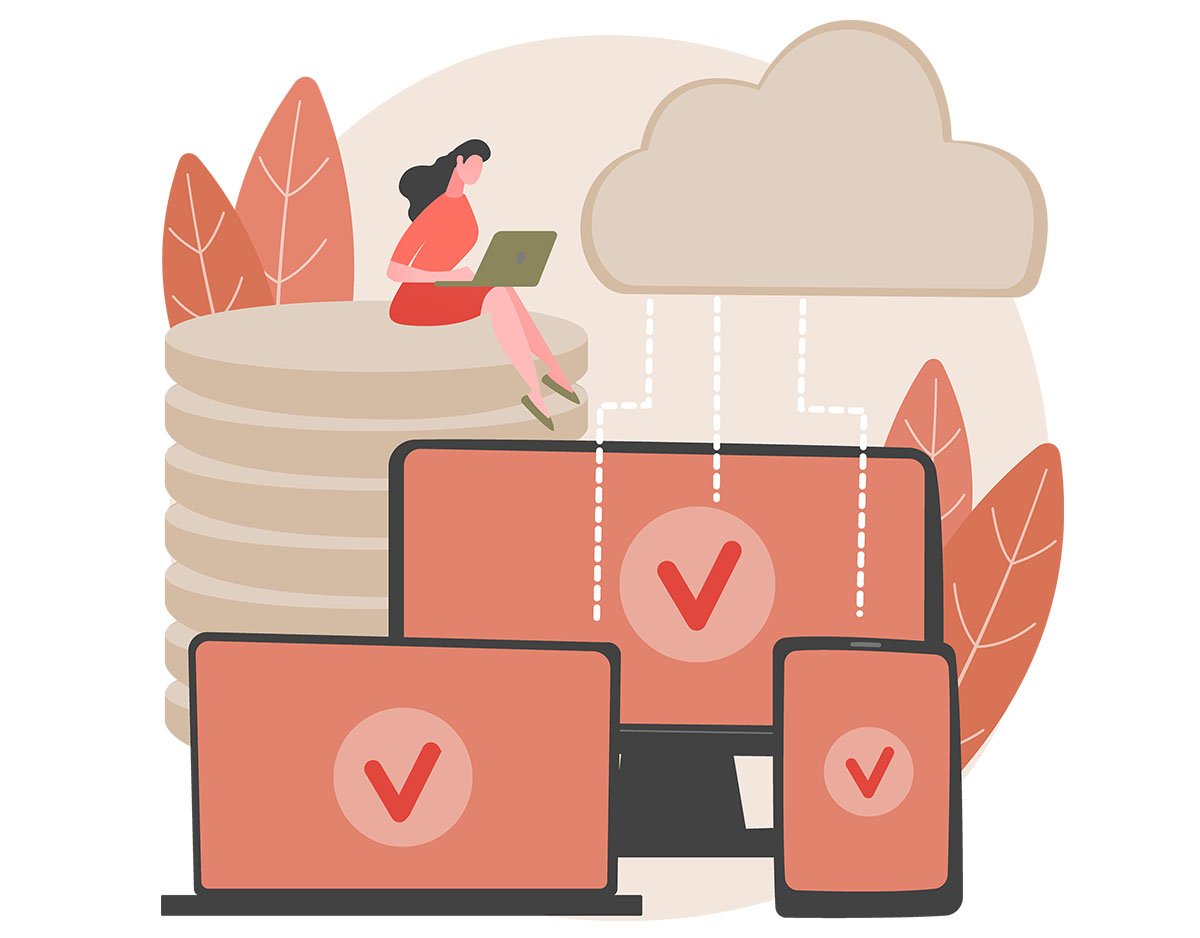
If you’re planning to develop a SaaS product, it’s very important to meticulously identify your platform requirements. This includes outlining core features, scalability requirements, security protocols, and other crucial specifications. This comprehensive understanding is paramount for selecting the optimal tech stack, which is a combination of programming languages, frameworks, libraries, and essential tools that will seamlessly integrate to power your SaaS platform and deliver its intended functionality.
Fundamentally, the tech stack serves as the architectural foundation of your application. So, it is important to choose the best solution as each component within this technological framework plays a pivotal role in determining the storage capabilities, processing speed, and responsiveness of your SaaS application. Because in the long run, the objective is to establish a platform that can scale efficiently and generate increasing revenue without draining your budget or stretching your project schedule.
So, let’s now explore several critical technologies that allow SaaS providers to bring their services to the public.
Front-end Technologies:
This is the visual layer of your SaaS product, designed to deliver a seamless user experience through direct interaction. Employing best-in-class technologies for your front-end tech stack ensures that your application will succeed in delivering a pleasant experience with a smooth interface.
A widely adopted JavaScript library, React is exceptionally well-suited for applications demanding rapid user interactions and dynamic content updates. Its strengths lie in efficient rendering capabilities, the creation of rich application interfaces, and a reusable, component-based structure that streamlines development. It’s often chosen for its flexibility and strong community support.
Angular is a feature-rich framework from Google, ideal for building fast, interactive single-page applications often used in SaaS products. Even though it has a steeper learning curve, it’s a preferred framework for large-scale and complex enterprise applications.
Recognized for its approachable learning curve and flexibility, Vue.js is a lightweight yet powerful JavaScript framework that has gained significant traction in SaaS development. It has easy-to-integrate components, straightforward designs and powerful features, making it the most appealing choice for developing interactive web pages and single-page applications. Its adaptability also permits seamless integration with existing projects.
Back-end Technologies
The back-end functions as the unseen, yet critical, engine driving your SaaS platform. It is responsible for all server-side logic, data management, and the overall coordination that ensures seamless communication and functionality between the front-end elements and underlying systems.
Common back-end frameworks powering SaaS platforms include Node.js, Django, Go, and PHP.
For SaaS applications requiring micro-service architecture with heavy computational capabilities and concurrency, GoLang is the go-to. It’s exceptionally efficient with its lightning-fast processing, low memory footprints and strong standard library.
PHP, while older, still powers a large number of SaaS applications, especially those built on CMS frameworks like Laravel or Symfony. It’s known for its flexibility, strong community support, and compatibility with many shared hosting environments, which can help reduce deployment costs. It’s great for building robust, database-driven applications and works well if you’re prioritizing budget or looking for a faster time to market.
Node.js, with its event-driven, non-blocking I/O model, is widely used for real-time applications and SaaS products that require high responsiveness even during peak traffic. It’s a solid choice for building fast, scalable applications, especially when using JavaScript across both front and back ends. Ideal for chat apps, live collaboration tools, or any software requiring real-time updates.
Django, based on Python, shines when it comes to rapid development and security. It comes with built-in admin tools, ORM, and robust security features, making it great for SaaS platforms handling sensitive data, such as edtech, fintech, or healthtech products.
Database Management
SaaS providers are often tasked with tracking, maintaining, and securing their clients’ data. Even in applications where data is not the primary service offered by a company, they must still manage subscription records, mailing lists, and contact information. In such cases, databases play a central role in supporting the core functionality of a SaaS platform.
Databases come in many shapes and sizes. Some are custom-tailored to a specific environment, while others are built broadly in order to maximize their usefulness across a wide variety of clients. Key database systems frequently used in SaaS development include MySQL, SQL, Oracle, IBM DB2, Elasticsearch, and Microsoft Access. Databases don’t need to be something overly complex and mathematical.
Infrastructure
To successfully launch and operate a SaaS application, a robust and adaptable infrastructure is paramount. Basically, this infrastructure is the bedrock of the entire SaaS tech stack, encompassing all the essential hardware, software, and network resources required to run your application smoothly, securely, and efficiently for your subscribers (tenants).
A big part of what makes modern SaaS infrastructure so effective is its scalability. This means your application can smartly manage resources, giving users a reliable experience even during busy times, and easily adapting as your business grows.
Most SaaS companies today lean heavily on cloud infrastructure providers for their live, production environments. These providers essentially handle all the complex physical hardware for you. The big names in this game are Amazon Web Services (AWS), Microsoft Azure, and Google Cloud Platform (GCP), all offering Infrastructure as a Service (IaaS). To know which cloud infrastructure suits your needs best, visit our blog on AWS vs Azure vs GCP.
While these three lead the pack, you’ve also got other great options like Oracle Cloud, IBM Cloud, and DigitalOcean, which you might choose based on your app’s performance needs, compliance standards, and budget.
Beyond the live production environment, infrastructure also plays a critical role in the SaaS application development lifecycle. Developers use cloud infrastructure to quickly set up development, testing, and staging environments that mirror the real-world setup. This allows for rapid prototyping, comprehensive testing of new features and updates, and iterative development without impacting live users.
Web Languages
The very nature of SaaS products is that they’re accessible across a wide variety of devices, including desktop computers, tablets, and smartphones. To achieve this broad compatibility, a significant portion of the application’s user-facing elements (the frontend) is built using standard web technologies. This usually relies on HTML5 to structure content, CSS to define its appearance, and JavaScript to add interactivity and dynamic behavior. Modern frontend development heavily leverages JavaScript frameworks and libraries like React, Angular, or Vue.js to build rich, responsive user interfaces.
The front end delivers the user interface, but all the core operations—like handling data, running server logic, managing APIs, and verifying users—happen on the back end. These critical backend services are developed using robust, server-side programming languages such as Python, Java, Node.js (JavaScript on the server), PHP, Ruby, Go, or C#. The distinct roles of frontend (browser-based) and backend (server-based) development highlight the importance of full-stack or hybrid developers who possess expertise across both domains, enabling seamless integration and efficient development of the entire SaaS solution.
Support and Help Desk Software
The operative term in SaaS is ‘service.’ Beyond continuously developing the core software, rolling out updates, and introducing new features, SaaS providers bear the crucial responsibility of comprehensively supporting their clients. Most SaaS providers must provide a dedicated help desk system in order to effectively manage the volume of user inquiries, service requests, technical troubleshooting, and general customer communication.
Rather than creating their own support system from scratch, the vast majority of SaaS companies usually opt to license dedicated middleware, which is often itself a SaaS product. While there are recurring fees to use such software, the cost-effectiveness, convenience, advanced features, and scalability they offer far outweigh the investment in in-house development and maintenance. Prominent examples of such highly regarded help desk and customer service platforms include Zendesk, Zoho Desk, Salesforce Service Cloud and Team Support.
Factors to Consider While Choosing Your SaaS Development Team
Picking the right SaaS development partner is arguably one of the most critical decisions you’ll make for your project’s success. It’s about finding a team that truly understands your vision and has the technical expertise to bring it to life. Like in any business, there are certain factors to consider when hiring your ideal SaaS development partner. By carefully evaluating these key factors, you’ll gain a deep understanding of your potential team’s technical prowess, ensuring you remain confident and in control throughout the entire SaaS development cycle and beyond.
Before you begin your search, get clarity on what your project actually needs. What are the core features? How many users do you anticipate? What are your security must-haves? So, basically, you’ve to outline your product vision. Whether it’s a CRM platform, a healthcare dashboard, or an AI-driven analytics tool, having clarity on your project scope helps you communicate better and assess whether a potential development team has the exact expertise to match.
Start by analyzing your competitors. What makes their SaaS products successful? What user pain points do they solve effectively? Then, broaden your scope to the key players in the SaaS development industry. Dive into their past projects, portfolios, and client testimonials. Look at the complexity of products they’ve handled successfully. This gives you a strong shortlist of experienced players who have a proven track record in your space. Once you have it, connect with them to discuss how they envision transforming your SaaS idea into a tangible, user-ready product.
Given that SaaS lives and breathes in the cloud, your development partner’s cloud expertise is non-negotiable. An efficient SaaS development company will be deeply familiar with major cloud platforms like AWS, Microsoft Azure, and Google Cloud Platform (GCP). Before you commit, understand what kind of cloud architecture best suits your SaaS vision, then specifically discuss this with your chosen team. Their expertise should enable them to expertly navigate the vast maze of cloud options, recommending the best features and configurations to keep you ahead of the competition.
Because SaaS platforms handle confidential user information in cloud environments, strong security measures are absolutely essential. Your development partner should be proactive in implementing data encryption, secure authentication, regular audits, and vulnerability patching. Evaluate how your team of dedicated SaaS developers approach security. Ask detailed questions: What encryption standards do they incorporate? How do they identify and address vulnerabilities and bugs? What is their frequency for security audits? SaaS partners who prioritize openness and take a forward-thinking stance on security tend to be the most reliable.
The tech landscape is always moving forward, and any company operating in this space needs to be adaptable, creative and eager to embrace new innovations. Check if your chosen SaaS development company is genuinely dedicated to incorporating best practices, adopting diverse agile methodologies and innovating with AI-driven development technologies. You want a team that actively strives to remain relevant and competitive. Don’t hesitate to ask them for an outline of the tech stack and tools they plan to implement for your SaaS project, and have them explain why these choices are the most relevant and beneficial for your long-term goals.
As your SaaS platform expands with new features and a growing user base, it’s vital to keep it up-to-date, secure, and performing optimally. This calls for a reliable, long-term partnership with your SaaS developers. Look for a team that is prepared to offer ongoing maintenance and feature expansion services, aligning with industry standards to support your business’s sustained growth and ensure your platform remains reliable and fully powered with the latest functionalities.
Leading Companies Shaping the SaaS Ecosystem
As SaaS adoption accelerates, companies targeting enterprise clients are facing fiercer competition than ever before. It’s no longer enough to launch a product and leave it as-is. The most successful SaaS companies are the ones that are continuously improving their platforms by rolling out new features, choosing the best tech stack, refining the user experience, and anticipating client needs. For software development companies entering this space, staying innovative is the key to make their SaaS product successful and attractive to enterprise clients.
The platform provides eight unique cloud products, including Sales Cloud, Service Cloud, and Marketing Cloud. Leveraging acquisitions such as MetaMind, PredictionIO, and RelateIQ, the company announced its AI initiative, Salesforce Einstein, to deliver a personalized, smarter, and improved predictive customer model for their clients. AI integration helps Salesforce resolve customer service issues quickly and allows its clients to easily classify new use cases on the basis of history and trends and provide recommendations on the fly.
With support for sophisticated machine learning technologies, Slack introduced a new search feature to its app, enabling users to find appropriate channels and subject matter faster than traditional search. Slack users now receive automated reminders with the built-in Slackbot feature. Its new note-taking feature, Posts, allows team members to share and work together on items that are too big for a single Slack user.They can now enjoy audio or video calls with up to 15 people without messages. The new threaded messaging feature allows team participants to make individual chat conversations that can be shared with group members. Furthermore, switching to other services like Skype or Google Hangouts.
The remote storage giant has made similar moves in bringing AI capabilities to its cloud content management services. The Google Cloud Vision API helps its customers manage and gain insight from their image files, enabling enhanced search and discovery that can speed up image-centric processes and workflows. Its new document collaboration tool, Notes, makes it easy for customers to create meeting notes, share ideas, track status updates, and plan projects together. In partnership with IBM, Box has also developed Box Relay, allowing its clients to build, track and manage custom workflows in real-time. It helps teams get their work done faster, resulting in efficiency gains for clients.
SaaS Is the Future
This short survey of companies’ latest innovations for their products illustrates just how competitive the market has become. The SaaS model is taking off in a big way, and those with the right idea and the right code can seriously impact this evolving market.
Bringing It All Together
Now that you have a firm grasp of the technologies underpinning modern SaaS products, you understand the value of adaptable and experienced developers. Devising and planning the concept for a successful SaaS app is critical. But its implementation and engineering are what will help differentiate your SaaS application from others.
At Zco, our team of experienced hybrid and database developers will help ensure that your SaaS app is built to your exact specifications and that it will scale to your users’ needs.
Get in touch with us and find out how we can help you utilize the software-as-a-service model to bring your app idea to market.

